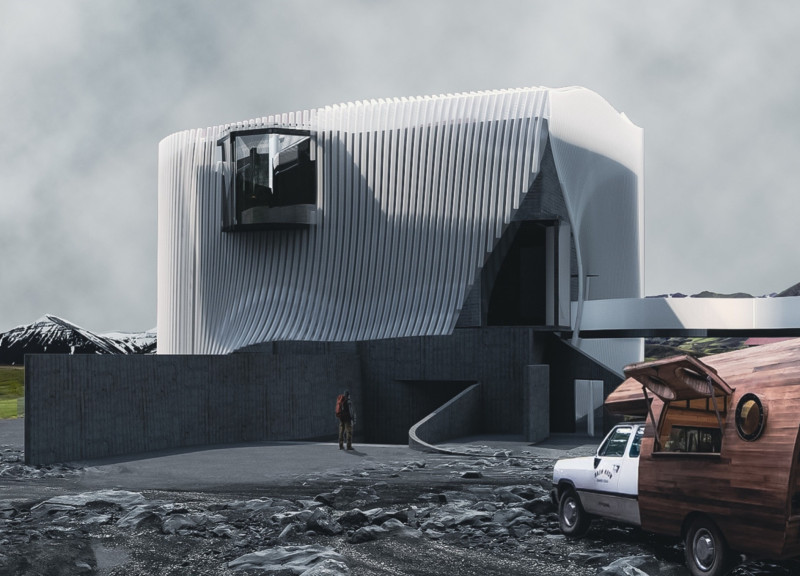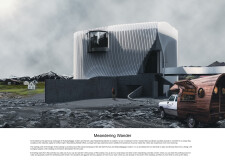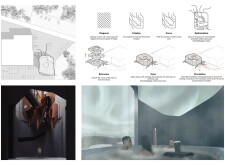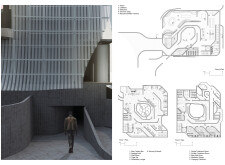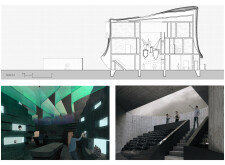5 key facts about this project
### Project Overview
Located within the Skútusagagígar Craters and along the shores of Mývatn Lake in Iceland, the beer spa is designed to foster interaction between built environments and their natural settings. The intent is to create an immersive spa experience that leverages the unique landscapes and natural phenomena of the area, particularly the auroras that illuminate the night sky.
### Spatial Strategy and User Experience
The architectural form is characterized by a meandering layout that reflects the natural contours of the surrounding terrain. Curved lines and fluid spatial arrangements create dynamic visual connections to the landscape, enhancing user engagement by offering panoramic views of the craters and lakes. Upon arrival, visitors navigate a dimly lit, winding concrete corridor that evokes a journey through nature, heightening anticipation as they approach the heart of the spa. This approach fosters a multisensory experience, characterized by the warming aromas and inviting atmosphere.
### Materiality and Architectural Elements
The material palette includes concrete for structural integrity and a raw aesthetic, extensive glass for transparency and natural light, and wood in key design elements, such as water features and furnishings. The atrium acts as a central gathering space integrating various communal functions, while the relaxation lounge and beverage areas are designed to encourage social interaction and individual retreat. Treatment rooms are strategically positioned to take advantage of the external views, enhancing the overall tranquil experience. The building's navigation is supported by well-considered circulation pathways, including staircases and ramps that connect different spaces while facilitating exploration.


